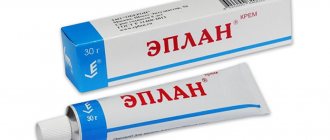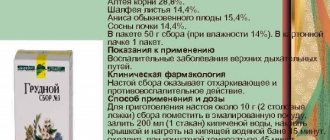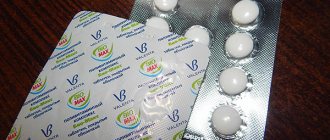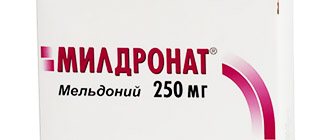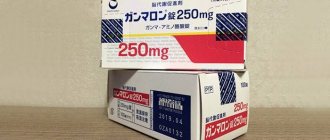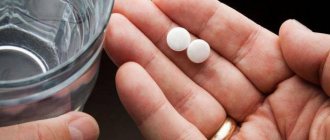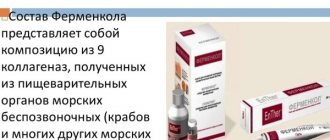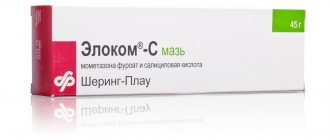"Levomekol" is an antibacterial combination drug for external use with a wide spectrum of action. Levomekol ointment prevents the spread of pathogenic microbes, eliminates swelling, accelerates wound healing, and also increases local skin immunity.
Levomekol for burns
This combination is provided by two active components in the ointment - Chloramphenicol (aka Levomycetin) and Methyluracil. Chloramphenicol is a natural antibiotic that actively blocks intestinal, pseudomonas and staphylococcal bacilli. And methyluracil accelerates the regeneration of the epidermis. The peculiarity of methyluracil is its ability to easily and quickly penetrate into the dermis, without affecting the membrane cell membrane. This process is associated with the removal of excess fluid from the intercellular space, which usually causes swelling and bruising.
What is Levomekol used for?
Levomekol has a multifaceted therapeutic effect:
- quickly reduces the inflammatory process, prevents its spread to healthy tissues;
- prevents the growth and reproduction of bacterial infectious agents;
- quickly eliminates swelling by normalizing microcirculation;
- ensures delivery of nutrients and biologically active substances, as well as molecular oxygen, to the affected tissues;
- stimulates the regeneration of inflammatory cells of all layers of the epidermis;
- increases immunity at the local level.
The ointment quickly removes all inflammatory processes on the skin
It is worth noting that the presence of purulent discharge and necrotic tissue does not prevent Levomekol ointment from performing its function. The drug can be used to disinfect and accelerate tissue regeneration.
pharmachologic effect
Due to the combined composition, the drug has antimicrobial, antibacterial and dehydrating properties.
It has therapeutic activity against gram-negative and gram-positive bacteria. The active ingredient, chloramphenicol, does not violate the integrity of cell membranes, easily penetrates deep into tissues, promotes their regeneration and removal of purulent contents. In addition, when using the ointment, there is a decrease in swelling, inflammation and strengthening of the body's defenses at the local level.
Indications for use of Levomekol ointment
Since Levomekol ointment has an antibacterial effect, and at the same time stimulates the restoration of tissue structure, the drug is indicated for the following diseases:
- infection of wounds with pathogenic microflora, ulcers and purulent abscesses on the epidermis;
- burns (mostly 2nd and 3rd degree);
- violation of tissue integrity due to injuries;
- necrotic processes;
- weeping and dry eczema;
- calluses;
- trophic ulcers;
- frostbite of the extremities (superficial layers of the skin);
- pimples, acne, carbuncles, boils;
- otitis and sinusitis (including with purulent discharge);
- treatment of sutures after surgery
- bedsores;
- haemorrhoids.
Levomekol ointment can be used for children
"Levomekol" can be used for children from 1 year. But before this, it is imperative to consult a pediatrician.
Is it possible to use Levomekol on a wound?
The ointment is widely used for the regeneration of clean wound surfaces and purulent discharge. It helps eliminate pathogens, helps reduce inflammation, swelling and prevents further skin infections.
Leniment is preferably applied at night. If the wound is clean, it is treated with an antiseptic solution and a thin layer of ointment. A bandage is applied on top. When the wound surface suppurates, turundas with an antiseptic are placed into its cavity to absorb pus and secretions. Afterwards, Levomikol is placed and fixed with a napkin soaked in the medicine.
Contraindications
Like many drugs, Levomekol has contraindications:
- individual intolerance to the components of the medication;
- hypersensitivity of the body;
- fungal infections of the epidermis;
- tendency to allergic reactions;
- psoriasis.
The official instructions for use indicate that in pediatrics the ointment is prescribed starting from 3 years of age. However, many pediatricians, based on the harmlessness of Levomekol, allow its use from infancy.
Side effects
Levomekol is considered a universal drug and is usually well tolerated by patients. But in case of overdose (if the drug is used for more than a week), allergic skin reactions may occur.
- hyperemia;
- burning;
- itching;
- urticaria;
- dermatitis at the site of application;
- local swelling;
- When using vaginal tampons, candidiasis may occur.
No incompatibility with other medicinal products has been reported. Make sure that the ointment does not get into your eyes, mucous membranes or inside. In case of contact with eyes and mucous membranes, rinse them immediately with running water. If swallowed, the stomach must be rinsed.
Side effects
Local allergic reactions :
- skin rashes;
- itching;
- burning;
- local swelling;
- hyperemia;
- angioedema;
- dermatitis;
- hives.
Sometimes general weakness may appear.
Such symptoms are a reason to stop treatment with Levomekol and consult a doctor.
The use of Levomekol in the form of vaginal tampons can cause the development of candidiasis , and therefore the drug is contraindicated for thrush .
Levomekol in the treatment of burns
For burns, Levomekol is needed to prevent infection of the wound surface with pathogenic infections, as well as to accelerate tissue healing. Levomekol also copes with inflammation, which can lead to suppuration of the wound. The ointment cleanses the affected area well from both purulent discharge and necrotic cells.
The treatment system for a small area burn of 1-2 degrees is as follows:
- before applying the ointment, the wound is washed under running water;
- the ointment is applied to a sterile gauze pad, which is applied to the wound surface;
- the bandage is applied for a day;
- dressings are done every day - up to 5 times a day.
The burn is treated until the tissue is completely healed. The total duration of the course for minor household burns is 5 – 14 days.
Composition of the drug
Levomekol is a local combination drug that is a homogeneous ointment of a white or slightly yellowish tint. Available in aluminum tubes with a volume of 25, 30, but more often - 40 grams. The average cost of a forty-gram tube is 108 rubles, which makes Levomekol affordable for the majority of the population.
The healing properties of the ointment are ensured by its special composition, which includes:
- Chloramphenicol
(antibacterial substance chloramphenicol) - exhibits activity aimed at disrupting the synthesis of proteins of pathogenic microorganisms such as streptococci and staphylococci, Escherichia coli and Pseudomonas aeruginosa. - Methyluracil
- stimulates local immunity, promotes cell regeneration, accelerates the healing process, and has an anti-inflammatory effect. - Auxiliary components
are macrogol 1500 and macrogol 400. By interacting with the main active ingredients, these components enhance their activity and also adsorb (draw out) exudate without damaging biological membranes.
Despite their secondary importance, additional substances serve as a kind of conductors that transfer active substances directly to the site of accumulation of pathogens. However, the degree of systemic absorption after application to wound surfaces, skin or mucous membranes is currently unknown.
To achieve the desired result and prevent unpleasant consequences when purchasing the drug, you need to pay attention to its shelf life, which is only 2 years.
The ointment should be stored in a place protected from children and direct sunlight, observing a temperature regime not exceeding 25°, and also not allowing the medication to be frozen.
Levomekol in the treatment of acne
"Levomekol" has an antibacterial and wound-healing effect, therefore it is widely used in dermatology, in particular, in the treatment of acne. The course of treatment depends on the severity of the disease and the number of skin rashes.
Small pimples are treated by applying a thin layer of ointment to the affected area. This is done in the evening for several hours, and before bedtime Levomekol is washed off. Within two weeks, pimples disappear, facial skin becomes even, and small scars heal.
Treating acne with ointment
Levomekol is applied to isolated inflamed pimples in a thin layer, covered with a small piece of cotton wool and left for 2-3 hours. Therapy lasts 2-3 days.
As for opened pimples, the medicine is placed directly into the resulting holes.
To treat acne, Levomekol is applied to the affected area overnight. In the morning, the ointment must be washed off. Typically, the course of treatment takes 2 weeks, during which the inflammation subsides and the acne breaks out or resolves.
To eliminate subcutaneous acne, you need to do the following:
- after washing with soap, the skin is cleansed with any tonic or lotion;
- Apply the ointment in a thin layer on a sterile napkin and apply it to the area of skin with acne;
- the bandage is fixed with adhesive tape.
The duration of the treatment procedure is 3-5 hours. If deep, painful ulcers appear on the skin, keep the bandage on the body all night.
The duration of therapy is about 7-10 days, depending on the degree of damage to the dermis.
How to use Levomekol correctly
Levomikol in the form of leniment is used topically for adults and children over 3 years of age. Depending on the indication, there are some differences in use.
In addition to applying the ointment to the affected areas, it can be administered through a syringe to wash out purulent cavities. To do this, the medicine is heated to 36 C.
When treating various infectious skin diseases, it is worth adhering to the therapeutic dose. The amount of ointment per day should not exceed 3 g. The course duration is 4 days. It is prohibited to use the product for longer to avoid an osmotic state in the affected cells.
Levomekol in the treatment of hemorrhoids
Levomekol ointment can be used as an addition to complex therapy for hemorrhoids during periods of exacerbation. It is recommended to use the ointment in cases where blood is released from the hemorrhoids. Since the drug has an antibacterial effect (wounds can be infected with feces), helps relieve inflammation and neutralize pathogenic bacteria, Levomekol is prescribed for the regeneration of anal tissue.
- it is necessary to wash the perineum and anus with soap and water and dry with a soft towel;
- apply a thin layer of ointment to the anus before going to bed;
- the area of influence from above is covered with a bandage and fixed with an adhesive plaster;
- When treating internal nodes, a tampon is soaked in ointment, which is then inserted into the anus.
Levomekol for hemorrhoids
The duration of therapy is 10 days. Since Levomekol is not a specialized antihemorrhoidal drug, after the inflammation has resolved, the decision to continue therapy and prescribe medications is made only by the attending physician.
How to treat hemorrhoids with Levomekol
Thanks to the use of Levomikol for hemorrhoids, significant success can be achieved. Since the medicine has an antimicrobial and antibacterial effect, it effectively fights infectious agents.
There is also a decrease in pain, inflammation, swelling and itching. Leniment promotes drying of tissues and stimulates their regeneration.
Treatment of hemorrhoids is carried out in the following order:
- The anus is washed with water at room temperature.
- Dry with a towel.
- Apply the ointment to the area of the nodes before going to bed.
- The anal area is covered with a clean cloth.
- The duration of the course of therapy is no more than 10 days.
Levomekol in the treatment of wounds
Levomekol helps heal damaged tissue and prevents infection of the wound surface. Moreover, it is not so important whether the wound has festered or not. If the wound is not purulent, then first the affected area is treated with an antiseptic. The ointment is applied in a thin layer overnight, then it must be covered with a sterile gauze cloth and secured with a bandage. Most often, wound treatment is required once a day.
If the wound festers, then using cotton-gauze swabs moistened with an antiseptic, the pus and secreted secretions are removed. Then Levomekol ointment is applied to the wound - it should be completely filled, but not too tightly. The affected area is covered with a gauze cloth, also soaked in ointment. As for the frequency of changing the bandage, it all depends on the amount of pus released. Usually a double dressing is sufficient.
And if the wound is deep and accompanied by an infectious lesion, then Levomekol is preheated to 35 degrees Celsius, then a sterile napkin is soaked in ointment (several can be used if the affected area is large) and injected into the lesion. If the affected area is large, use several napkins with Levomekol. It is important that the wound is filled completely, but not too tightly.
Note that to administer the medication into puncture and deep wounds, it is better to use a rubber drainage tube, and inject the heated ointment itself using a syringe.
The duration of therapy usually lasts from 5 to 10 days.
Use of Levomekol ointment in gynecology
Levomekol is successfully used in gynecology and urology.
In gynecology, therapy is carried out using tampons with ointment applied to them. A similar method is indicated for the treatment of the following conditions:
- inflammatory erosion of the cervix;
- inflammation of the uterine appendages (ovaries, fallopian tubes);
- divergence of vaginal sutures after ruptures during childbirth or operations.
The treatment system consists of the following sequence of actions:
- before use, a woman must thoroughly wash and dry the skin of the treatment area and perineum;
- if therapy is used after the divergence of vaginal sutures or after operations, then the sutures must be treated with a weak solution of potassium permanganate or furatsilin;
- you need to make a small cotton swab, put an ointment on top of it measuring 15 mm x 15 mm, and 5 mm high;
- insert into the vagina at night and remove in the morning;
- if therapy is used after the divergence of vaginal sutures or after operations, then the ointment is applied to a gauze bandage and applied to the sutures. Then put on clean underwear (if necessary, you can additionally use a pad). The dressing remains on for 2 to 6 hours.
Using the method described above, the active substance of the ointment is delivered to the affected area and absorbed into the surrounding vaginal tissue.
In urology, Levomekol is used in the treatment of balanitis and balanoposthitis in men, as it has anti-inflammatory and antimicrobial effects. The treatment system consists of the following sequence of actions:
- before applying the ointment, the head of the penis is washed with a weak solution of potassium permanganate or furatsilin, removing pus and dead tissue;
- Levomekol is applied to the affected area in a dense layer.
The remedy is applied 1-2 times a day until complete recovery. After the inflammation is relieved, Levomekol is applied for another week, 1 time per day - in the evening, before bedtime.
Levomekol or Vishnevsky ointment. What's better?
Let's start with the fact that Vishnevsky ointment and Levomekol, although they are used in similar cases, still have a multidirectional spectrum of action. Thus, Vishnevsky ointment is effective when the wound is in the process of regeneration. Therefore, it cannot be used when the wound is suppurated or severely inflamed. Yes, the drug contains an antiseptic, but its concentration is not enough to provide a bactericidal effect. Moreover, tar and castor oil stimulate blood circulation in the affected area, which worsens the situation.
This is why Vishnevsky’s ointment is not as effective, since Levomekol has higher antibacterial activity due to the presence of an antibiotic in it and accelerates the process of outflow of pus from the wound. Also important are the following distinctive features that determine the superiority of Levomekol ointment:
- no unpleasant odor;
- higher repair characteristics;
- does not provoke irritation in the treatment area;
- when treating boils, Levomekol quickly initiates an abscess and opening of the abscess, followed by wound healing.
But if Vishnevsky ointment helps the patient, then there is little point in changing it.
Analogues of Levomekol
Level 4 ATC code matches:
D-Panthenol
Panthenol
Kalanchoe juice
Aloe liniment
Pantestin-Darnitsa
Dexpanthenol
Contractubex
Pantoderm
Bepanten
Synonyms: Levomethyl , Netran .
Analogues of ointment, similar in mechanism of action: Levomycetin , Levosin , Lingesin , Protegentina ointment , Streptonitol , Fastin 1 .
In gynecology and for hemorrhoids, Methyluracil suppositories can be used as an analogue of the drug in some cases .
Levomekol or Vishnevsky ointment - which is better?
The basis of Vishnevsky's ointment is xeroform , birch tar and castor oil . Levomekol has a local anti-inflammatory and antimicrobial effect , the use of Vishnevsky ointment gives local irritant and antiseptic effects .
Levomekol is prescribed mainly for the treatment of severely inflamed, festering, infected wounds (in the wound inflammation phase). Vishnevsky ointment , according to Wikipedia, is used mainly in the regeneration phase of the wound process: balsamic liniment stimulates tissue repair and granulation in a regenerating wound.
Liniment is contraindicated in cases of unsanitized purulent processes ( felon , boil , carbuncle , etc.), however, use in these cases makes it possible to speed up the abscess and cleaning of the wound in the future.
contained in Vishnevsky's ointment penetrates the skin in concentrations insufficient for a bactericidal effect . Tar and castor oil stimulate local blood circulation in the suppurating area and inflammation. The course of the pathological process is aggravated by increased pain, expansion of the purulent cavity and accumulation of exudate.
Vishnevsky ointment is hydrophobic, therefore its use for the treatment of purulent wounds does not allow for normal outflow of wound secretions, and its antimicrobial component is not released and does not have the necessary effect.
Levomekol is a hydrophilic, water-soluble substance. The antibiotic it contains easily transfers from the ointment to the wound. The osmotic activity of the drug is 10-15 times higher than the effect of a hypertonic solution and lasts from 20 to 24 hours. In this regard, for an effective effect on the wound surface, 1 dressing per day is sufficient.
What to choose, Ichthyol ointment or Levomekol?
Ichthyol ointment has keratoplasty , antiseptic , anti-inflammatory and local anesthetic effects .
The product regulates vascular tone and has a beneficial effect on inflamed skin and subcutaneous layers. Indications for the use of “ichthyolka” are skin diseases, arthritis and neuralgia .
Thus, the drugs have different indications for use, which makes their comparison incorrect.
Analogs
Analogs of Levomekol ointment have a bactericidal and healing effect. But the difference lies in the active ingredient of the drug. So, among the analogues one can name Fugentin, Levosin (additionally has an analgesic effect), Protegentin, Fastin-1, Salicylic-zinc paste.
Synonyms, that is, drugs with the same substance (but in higher concentration) as Levomekol ointment, can be considered Netran and Levomethyl. Substitute medications can only be prescribed by the attending physician.
